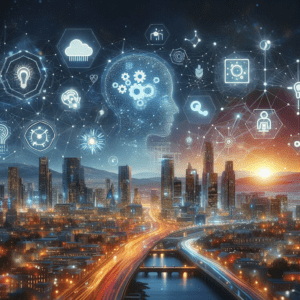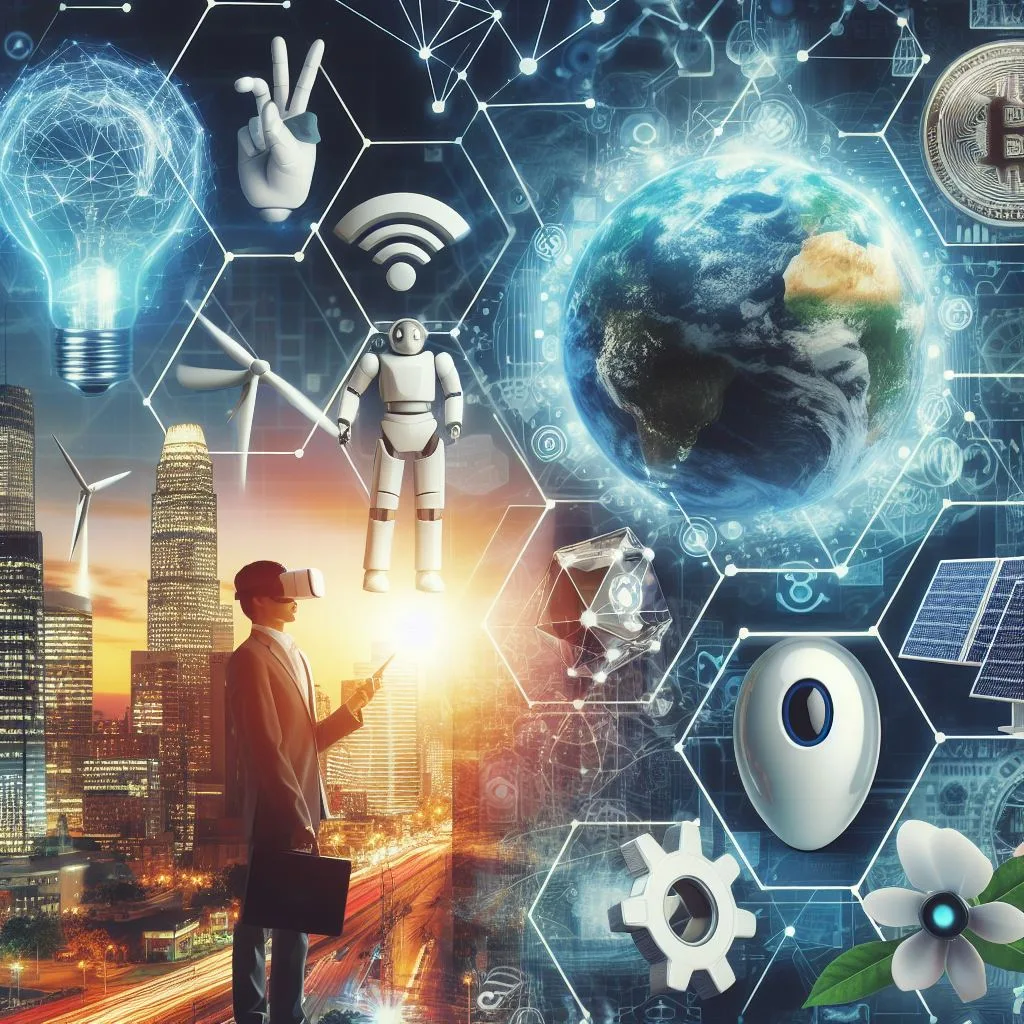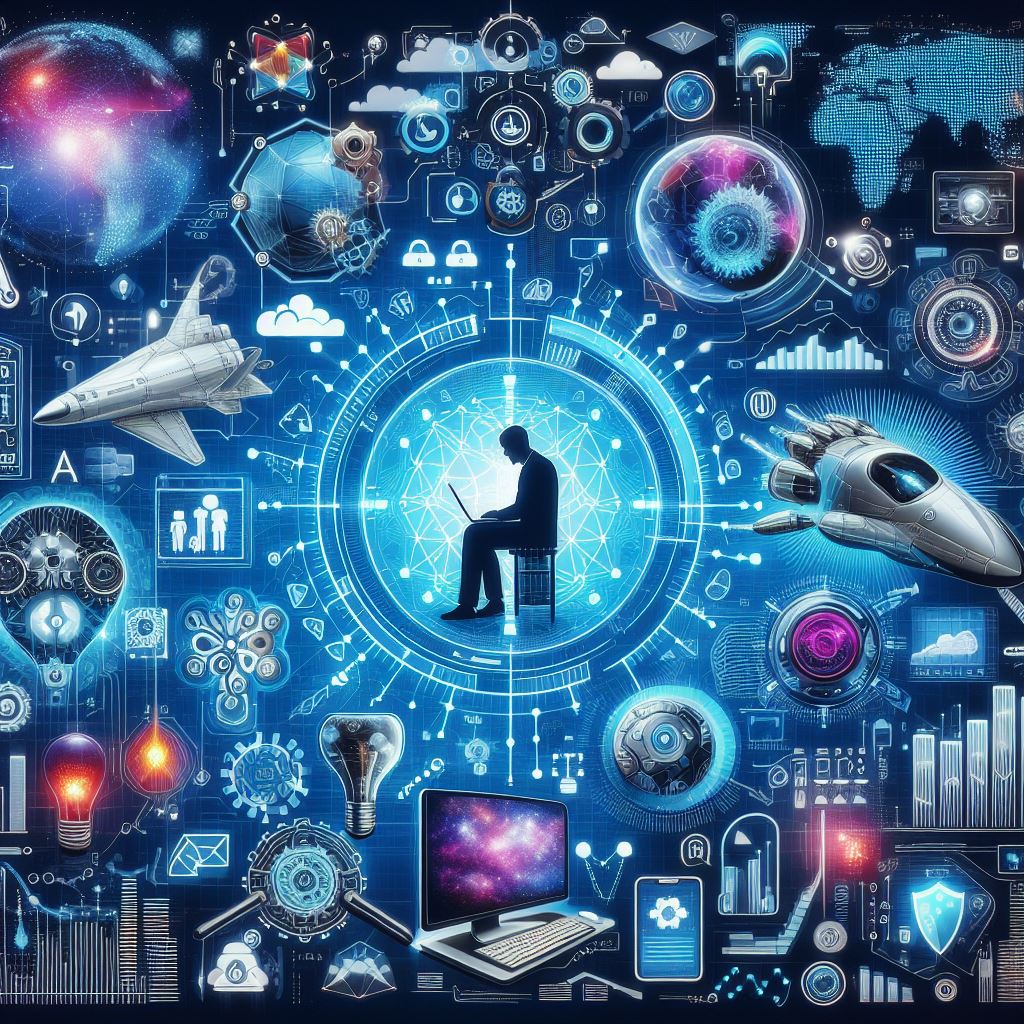Introduction
The year 2024 marks a pivotal moment in the trends in technology, with innovations shaping every facet of our lives. From AI to IoT, these advancements are not just fleeting trends but are becoming integral components of our daily existence, heralding a new era of digital transformation.
Overview of Technological Trends
Technological trends are rapidly evolving, driven by relentless innovation and the quest for efficiency. The integration of AI, IoT, and 5G is revolutionizing industries, creating a connected world that is smarter and more responsive. These trends are not merely passing phenomena; they are the harbingers of a comprehensive technological integration that will define our future.
Importance of Staying Updated on Technology Trends
Keeping abreast of technology trends is crucial for businesses and individuals alike. It ensures competitiveness and enables one to harness the benefits of new technologies for personal and professional growth. In a world where technological trends are inextricably linked to progress, staying informed is not optional—it’s essential.
Artificial Intelligence and Machine Learning
Advances in AI and ML Technology
The landscape of Artificial Intelligence (AI) and Machine Learning (ML) is rapidly advancing, with 2024 poised to be a transformative year. AI and ML technologies are becoming more sophisticated, with a focus on enhancing performance and accessibility. Smaller, more efficient models are being developed, enabling businesses and individuals to leverage AI for a variety of applications.
is rapidly advancing, with 2024 poised to be a transformative year. AI and ML technologies are becoming more sophisticated, with a focus on enhancing performance and accessibility. Smaller, more efficient models are being developed, enabling businesses and individuals to leverage AI for a variety of applications.
Applications in Various Industries
AI and ML are not confined to tech spaces; they’re permeating every industry, from healthcare to finance, offering unprecedented efficiency and decision-making capabilities. These technologies are enabling predictive analytics, personalized customer experiences, and automation of routine tasks, driving operational excellence across sectors.
Ethical Considerations and Challenges in AI
As AI becomes more integrated into our lives, ethical considerations are paramount. The challenges include ensuring fairness, transparency, and accountability in AI systems. Addressing these concerns is critical for maintaining public trust and fostering sustainable AI development.
For more on AI advancements, click here.
Internet of Things (IoT)
Growth of Connected Devices
The IoT is expanding at an astonishing rate, with predictions of billions of connected devices by 2030. This growth is fueled by the integration of AI and ML, enhancing the intelligence and efficiency of IoT systems.
Smart Homes and Cities
IoT is the cornerstone of smart homes and cities, offering improved energy management, security, and convenience. The technology is reshaping urban landscapes, making them more responsive to the needs of residents and the environment.
Security and Privacy Concerns in IoT
With the proliferation of IoT devices, security and privacy concerns are escalating. Ensuring robust security measures and addressing privacy challenges are critical for the safe adoption of IoT technologies.
5G Technology
Benefits of 5G
5G technology is revolutionizing connectivity with its ultra-fast speeds and low latency. It enables near-real-time data transfer, which is essential for applications like autonomous vehicles and remote surgeries.
Impact on Communication and Industries
5G’s impact extends beyond communication; it’s a catalyst for industry transformation. The technology is facilitating the Internet of Things, enhancing industrial automation, and enabling new business models.
Future Prospects and Challenges in 5G
The future of 5G is bright, with ongoing innovations and increasing adoption. However, challenges such as infrastructure development and spectrum allocation remain critical areas to address.
For the latest updates on 5G technology, click here.
Blockchain and Cryptocurrencies
Evolution of Blockchain Technology
Blockchain technology is evolving, with 2024 seeing advancements in interoperability and security. The technology is becoming more mainstream, with applications extending beyond cryptocurrencies.
Applications Beyond Cryptocurrencies
Blockchain’s potential is vast, with use cases in supply chain management, digital identity, and more. It’s enabling secure, transparent transactions and fostering trust in digital interactions.
Regulatory Landscape and Challenges in Blockchain
The regulatory landscape for blockchain and cryptocurrencies is complex, with governments worldwide working to develop frameworks that balance innovation with consumer protection.
Augmented Reality (AR) and Virtual Reality (VR)
Innovations in AR and VR
In 2024, AR and VR are not just about gaming; they’re transforming how we interact with the world. Innovations include AI-powered AR for more realistic experiences and haptic feedback in VR for a true sense of touch. These technologies are making digital interactions more immersive and intuitive.
Use Cases in Entertainment, Education, and Healthcare
AR and VR are enhancing entertainment, making movies and games more interactive. In education, they’re bringing lessons to life, helping students visualize complex concepts. Healthcare is also benefiting, with VR being used for therapy and training surgeons.
Future Potential and Limitations in AR and VR
The potential of AR and VR is vast, with future applications possibly including remote work and social interactions. However, challenges like tech accessibility and user safety must be addressed to realize their full potential.
Quantum Computing
Basics of Quantum Computing
Quantum computing is a leap from traditional computing, using qubits for processing. It’s not just faster; it can solve problems that are currently impossible for classical computers.
Current Developments and Breakthroughs
In 2024, quantum computing is making strides with error correction and qubit quality improvements. These advancements are crucial for practical, real-world applications of quantum technology.
Potential Applications and Challenges in Quantum Computing
Quantum computing could revolutionize fields like drug discovery and finance. However, it also poses challenges, such as data security, as it could break current encryption methods.
For more information on quantum computing, click here.
Cybersecurity Trends
Emerging Threats and Vulnerabilities in Cybersecurity
Cybersecurity is facing new threats with the rise of AI-generated attacks. As technology evolves, so do the tactics of cybercriminals, requiring advanced defense strategies.
Advances in Cyber Defense Technologies
To combat emerging threats, AI and machine learning are being employed in cybersecurity. These technologies can detect and respond to threats faster than ever before.
Importance of Cybersecurity Awareness
Awareness is key in cybersecurity. Understanding the risks and implementing best practices can protect against many common threats. It’s essential for individuals and organizations alike.
For more information on cybersecurity, click here.
Edge Computing
Difference Between Edge and Cloud Computing
Edge computing brings data processing closer to the source of data, minimizing latency and bandwidth use. In contrast, cloud computing relies on a centralized data center, which can be miles away from the data source, potentially causing delays.
Benefits and Use Cases of Edge Computing
Edge computing offers real-time data processing, essential for applications like autonomous vehicles and IoT devices. It supports AI-driven analytics at the source, enhancing decision-making processes in various sectors such as healthcare and manufacturing.
Future Directions in Edge Computing
The future of edge computing is promising, with advancements in 5G and IoT driving its growth. It’s expected to play a crucial role in smart city infrastructures and remote healthcare services, providing faster and more reliable data processing.
Sustainable Technology
Green Tech Innovations
Sustainable technology is witnessing a surge in green tech innovations, such as renewable energy sources and eco-friendly materials, which are crucial for reducing environmental impact and promoting sustainability.
Impact on Environment and Sustainability
Green technologies are making significant strides in reducing carbon footprints and promoting sustainable practices. They’re vital in combating climate change and preserving natural resources for future generations.
Corporate and Consumer Roles in Sustainable Technology
Both corporations and consumers have pivotal roles in adopting sustainable technologies. Companies are investing in green solutions, while consumers are increasingly choosing eco-friendly products, driving the demand for sustainable options.
For more information on sustainable technology, click here.
Biotechnology and Health Tech
Advances in Biotechnology
Biotechnology is advancing rapidly, with breakthroughs in genetic engineering and personalized medicine. These innovations are paving the way for targeted therapies and improved healthcare outcomes.
Digital Health and Telemedicine
Digital health and telemedicine are transforming healthcare delivery, making it more accessible and efficient. They enable remote patient monitoring and virtual consultations, which are particularly beneficial in rural and underserved areas.
Ethical and Regulatory Issues in Health Tech
As health tech evolves, ethical and regulatory challenges arise, particularly concerning data privacy and patient consent. Addressing these issues is essential to maintain trust and ensure the responsible use of technology.
For more information on biotechnology and health tech, click here.
Autonomous Vehicles
Progress in Self-Driving Technology
Self-driving technology is progressing, with advancements in AI and machine learning enhancing the capabilities of autonomous vehicles. These developments are leading to safer and more efficient transportation systems.
Regulatory and Safety Considerations in Autonomous Vehicles
Regulatory and safety considerations are critical in the development of autonomous vehicles. Establishing clear guidelines and standards is necessary to ensure the safety of passengers and pedestrians.
Future of Mobility: Autonomous Vehicles
The future of mobility is likely to be shaped by autonomous vehicles, which promise to revolutionize transportation by reducing accidents, easing traffic congestion, and providing mobility for all.
Robotics and Automation
Growth in Robotics
Robotics is experiencing significant growth, with robots becoming more intelligent and capable. This growth is driven by advancements in AI and machine learning, enabling robots to perform complex tasks with greater precision.
Applications in Manufacturing and Services
Robots are increasingly used in manufacturing and services, automating tasks that are repetitive, dangerous, or require high precision. This automation is improving efficiency and productivity in various industries.
Societal Impact and Workforce Implications of Robotics
The rise of robotics is impacting society and the workforce, leading to changes in job roles and the need for new skills. While some jobs may be automated, new opportunities are also being created, emphasizing the importance of adaptability and lifelong learning.
Conclusion on Technology Trends
Summary of Key Trends
The key trends in technology for 2024 reflect a convergence of multiple innovative fields, each contributing to the tapestry of our digital future.
Future Outlook on Technology Trends
The outlook for technology trends in 2024 is one of continuous innovation and integration, shaping a transformative landscape across various sectors.
Importance of Adaptation and Learning in Emerging Trends
Adaptation and lifelong learning are essential to thrive amidst these emerging technology trends, ensuring a future that is both technologically advanced and sustainable.


